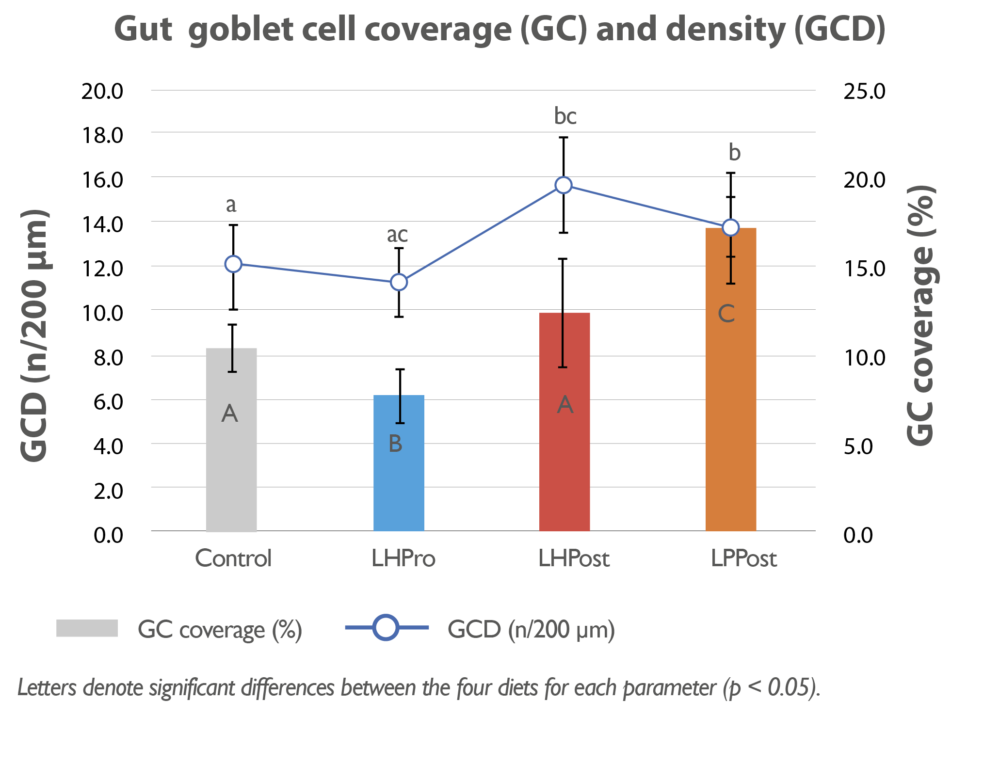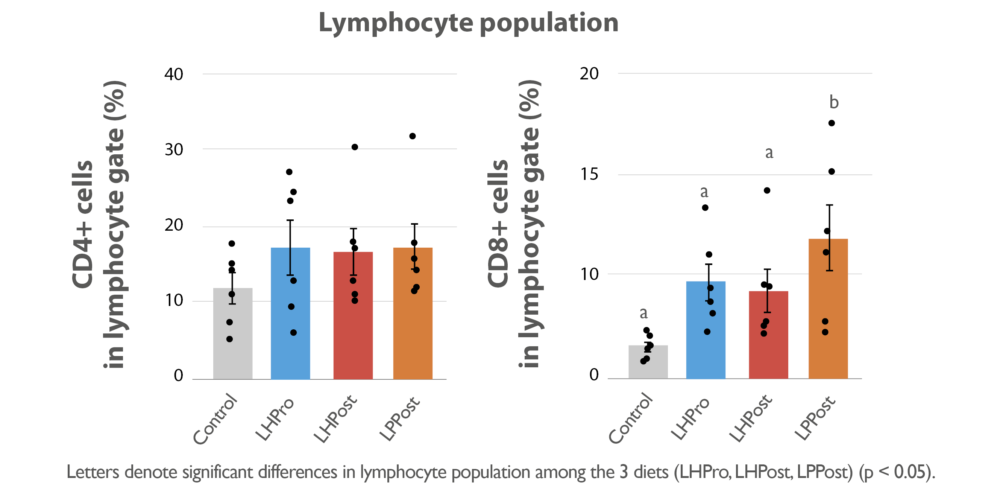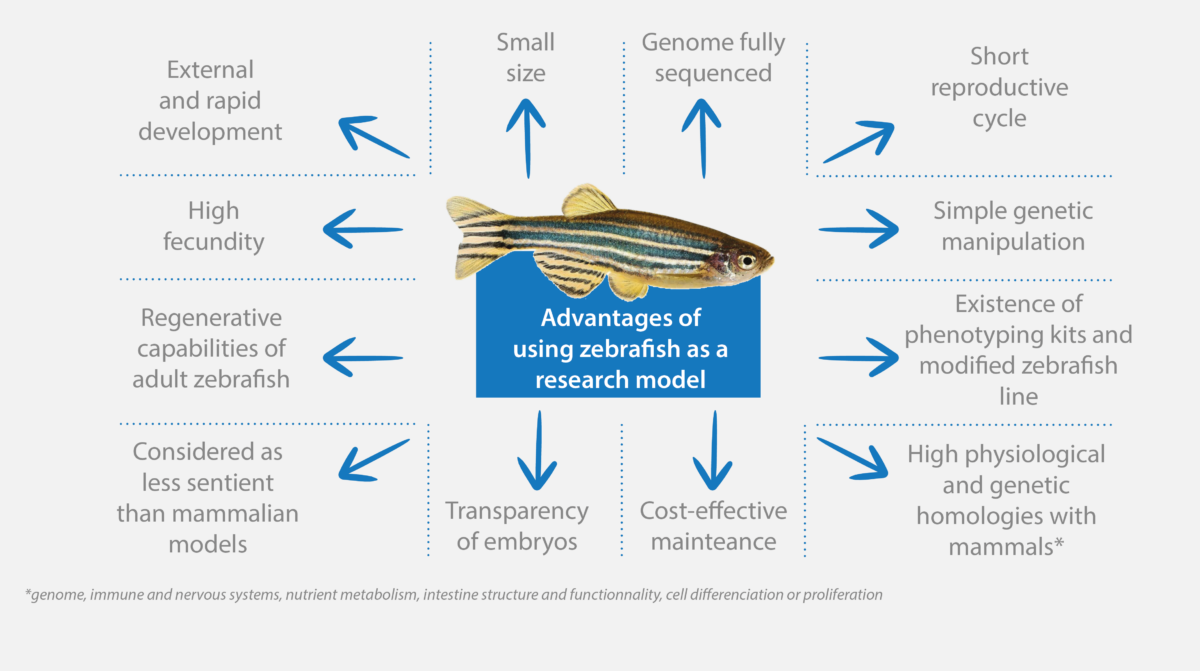Blog | Reading Time 3 minutes
Unlocking the Power of Bacterial Postbiotics: Zebrafish as a Model for Pet Food Research

Lallemand Animal Nutrition recently conducted a study in collaboration with the University of Plymouth to compare the beneficial effect of dietary supplementation with Lactobacillus-based products, either live (probiotic) or LALPROBIOME heat-treated (postbiotic), in supporting gut barrier integrity using zebrafish as a vertebrate model.
Zebrafish: As a model
Since the 1960s, the 3Rs principle: Replacement, Reduction, and Refinement, has been recognized as the scientific standard for the ethical framework used to improve animal welfare for experimentation and is required in the legislation framework of animal experimentation worldwide. Animal models remain an essential measure in helping researchers and the scientific community identify and understand biological mechanisms, disease progression, as well as develop new therapeutic or supplemental solutions. Mammalian models are replaced by less sentient animals and the use of zebrafish (Danio rerio) has exponentially increased among the scientific community over recent decades. Zebrafish genetic, anatomical and physiological homology to mammals provides an alternative model to rodents and provides superior information to in vitro modelling. Due to the considerable benefits, Lallemand has used zebrafish in many of research projects.
Gut barrier function: why is it important?
Pathogens have two main pathways for entry into the body: the skin and mucosal surfaces. The gastrointestinal tract is constantly challenged by multiple stimuli, required to discriminate against pathogens and food antigens, and encounters more antigens than any other bodily site. Gut barrier function and integrity is crucial for homeostasis and proper immune function. The microbiota, mucus and epithelial cells, all act as physical and chemical barriers to protect immunocompetent cells within the gut and the internal body itself.
Goblet cells (GC) are specialized epithelial cells that line the mucosal surface and are integral for the secretion of mucus. Mucus forms part of the biochemical barrier found within the gut and acts as a sieve-like structure to allow passage of small and selected molecules, while separating and protecting epithelial cells from the microbiota and potential pathogens. Beyond barrier maintenance, GC also play a role in the innate immunity, acting as antigen sensors. A high density and coverage of GC is indicative of a functional mucus barrier. After this first line of defense, the intestinal epithelial cells form a physical barrier. This physical barrier helps restrict and control the paracellular diffusion of essential ions, nutrients, microorganisms and toxins. In humans, the intestinal epithelium spans between 2,000 to 4,000 square feet and consists of a single layer of cells. Between cells, multiprotein complexes dynamically regulate barrier integrity and are the rate-limiting factor for permeability. Zonula-Occludens (ZO) is an essential protein for the formation and maintenance of these junctions and is ubiquitously expressed in epithelial cells.

The gut mucosal system: a unique network
Approximately 70 percent of the immune cells are found within the gastrointestinal tract, acting as an immunological barrier. The intestinal immune system is a complex network dedicated to the defense of the body against pathogens while keeping tolerance to beneficial microbes and food antigens. Several specialized cells, like lymphocytes, dendritic cells and macrophages, take part in this system, including, intraepithelial lymphocytes (IEL). IEL are found within the epithelial layer of the intestinal mucosa and play a crucial role in immune surveillance, keeping gut homeostasis and responding to pathogens or other challenges. CD4+ and CD8+ are two subsets of IEL that are important to note.
- CD4+ T cells help maintain tolerance to dietary antigens and commensal bacteria, participate in immune responses against pathogens, or assist in inflammatory processes.
- CD8+ T cells are often cytotoxic T cells, capable of directly killing infected or aberrant (abnormal) host cells.

The gut immune response: mucosal markers

Conclusion
This study demonstrates that LALPROBIOME probiotic and postbiotic bacterial strains support gut barrier integrity and natural defenses which are crucial factors in supporting pet gastrointestinal homeostasis and immunity.
Published Apr 16, 2024 | Updated Jun 10, 2024
